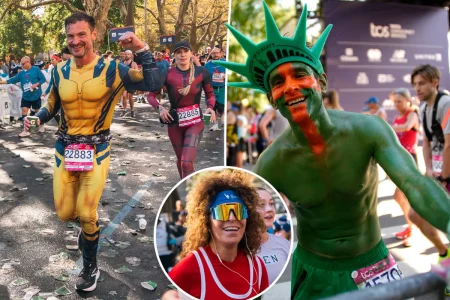When Teacher Fashion Stirs Up Controversy
In today’s hyper-connected world, what people wear to work has become a hot topic of debate, particularly for those in positions that interact with impressionable minds. Recently, teachers have found themselves under scrutiny for their fashion choices, sparking conversations about professionalism, body autonomy, and the evolving standards of workplace attire. The discourse highlights a tension between personal expression and perceived professional boundaries, especially in educational settings where teachers serve as role models for younger generations.
One recent example that ignited online discussion involved a school teacher named Denise, who shared a TikTok video showcasing her daily outfit. The video, later reposted to X (formerly Twitter), amassed over 5 million views and generated significant commentary. Denise’s ensemble consisted of black Abercrombie pleather pants, which she praised for their fit and durability, paired with a cream-colored cashmere sweater featuring black details, and Zadig & Voltaire sneakers. While the outfit didn’t reveal skin, it nonetheless provoked divided reactions online. Critics labeled her pants as “club wear” inappropriate for a school setting, with some expressing concern that teachers shouldn’t be trying to look “hot” around students. The criticism seemed to intensify when Denise appeared to be seeking validation about her appearance, which some viewers felt crossed a professional boundary regardless of the actual clothing items.
Not everyone took issue with Denise’s fashion choices, however. Several commenters came to her defense, pointing out that students likely wouldn’t view her outfit as provocative or inappropriate. “Kids don’t care. To them you’re an old lady in ‘leather’ pants,” remarked one commenter, highlighting the generation gap in perception. Others simply stated they didn’t see anything problematic with her attire, suggesting that contemporary workplace fashion standards might be more accepting of such styles than traditional expectations would indicate. This support illustrates how perceptions of appropriate professional attire have evolved and continue to vary widely among different segments of society.
The controversy surrounding Denise’s outfit isn’t an isolated incident in the ongoing conversation about teacher attire. Another educator who has attracted attention is a fashion influencer with over 134,000 TikTok followers, known as Ms. Williams. Her content often features her wearing form-fitting outfits in the classroom, including a viral video where she sports a nude pencil skirt, white blouse, and black lace-up heels. The reactions to her videos have been particularly harsh, with critics calling for stricter teacher dress codes and accusing her of deliberately showcasing her physique for attention. Some comments even suggested she was intentionally positioning her camera to highlight certain physical attributes while teaching, accusations that carry undertones of sexualization in what should be a professional context.
These cases raise important questions about the intersection of personal style, body type, professionalism, and gender expectations in educational environments. When does self-expression through fashion become inappropriate for educators? Is there a double standard at play, particularly for female teachers whose bodies might be scrutinized differently than their male counterparts? The debate extends beyond simple dress code violations into deeper territory about how we perceive authority figures, especially women, in positions of influence over young people. It’s worth noting that what one person views as inappropriate might be considered perfectly acceptable professional attire by another, reflecting changing norms across generations and cultural contexts.
As social media continues to blur the lines between personal and professional life, educators find themselves navigating a complex landscape where their appearance can become subject to public referendum. The virality of these fashion-related controversies demonstrates how clothing choices—once a relatively private matter—now face potential judgment from millions online. For teachers who are already managing challenging workloads, limited compensation, and the responsibility of shaping young minds, the added pressure of appearance policing represents yet another hurdle in an already demanding profession. Moving forward, finding a balance that respects both professional standards and personal expression will remain a nuanced challenge, one that perhaps requires more empathy and less judgment from all sides of the conversation.















